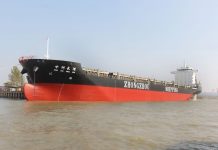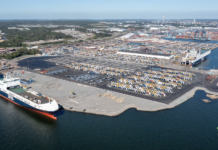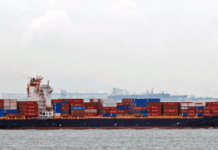
Global port and terminal operator International Container Terminal Services, Inc. (ICTSI) achieved to increase its revenue and earnings in the first half of the year, while container volumes in its terminals have also shown a significant uptrend.
In particular, ICTSI noted a year-on-year 10% growth in its revenues, reaching US$1.16 billion in the first six months of 2023. Additionally, the Philippines-headquartered port operator increased by 8% its earnings before interest, taxes, depreciation and amortization (EBITDA) to US$728.88 million. Moreover, the company’s net income climbed to US$313.8 million, which is a 7% increase over the first half of 2022.
In the same period, ICTSI handled 6,275,837 TEUs from January to June 2023, representing a 9% growth compared to boxes handled in the same period last year.
The increase in consolidated volume was mainly due to the contribution of MNHPI in Manila which was consolidated starting September 2022, improvement in trade activities, and new services at certain terminals; tapered mainly by the impact of the expiration of concession contract at PICT in Karachi; cessation of cargo handling operations at Makassar Terminal Services (MTS) in Makassar, and Davao Integrated Port and Stevedoring Services Corporation (DIPSSCOR) in Davao; and slowdown in trade activities at certain terminals, according to ICTSI, which clarified that “excluding the contribution of MNHPI, PICT, DIPSSCOR and MTS, consolidated volume would have increased by 1%.”
Enrique K. Razon, ICTSI chairman and president, stated, “We have a robust balance sheet and a highly cash generative business which looking ahead, will enable us to continue our strong track record of investing in our terminals to support future growth for the benefit of all our stakeholders. Our estimated capital expenditure is US$400 million for the year which will be used to expand and improve productivity and efficiency at terminals including Australia, Mexico, the Philippines, the Democratic Republic of Congo and Nigeria. These investments are examples of our ongoing commitment to making our ports more efficient, accessible and globally competitive.”








